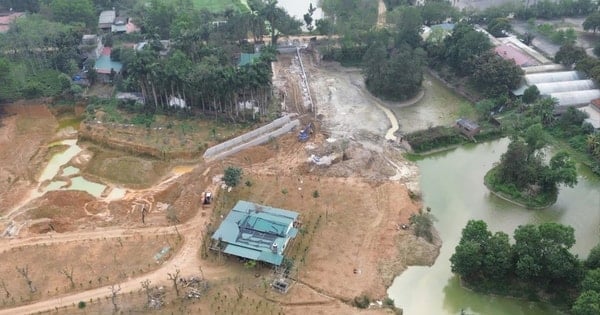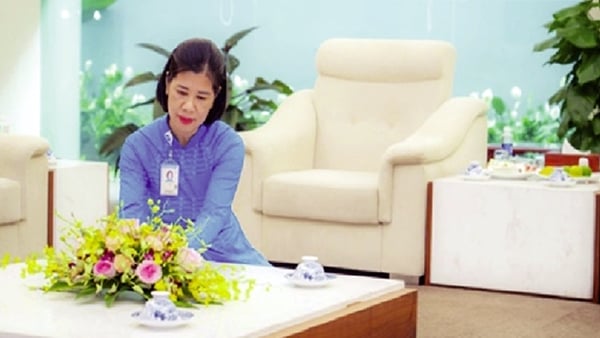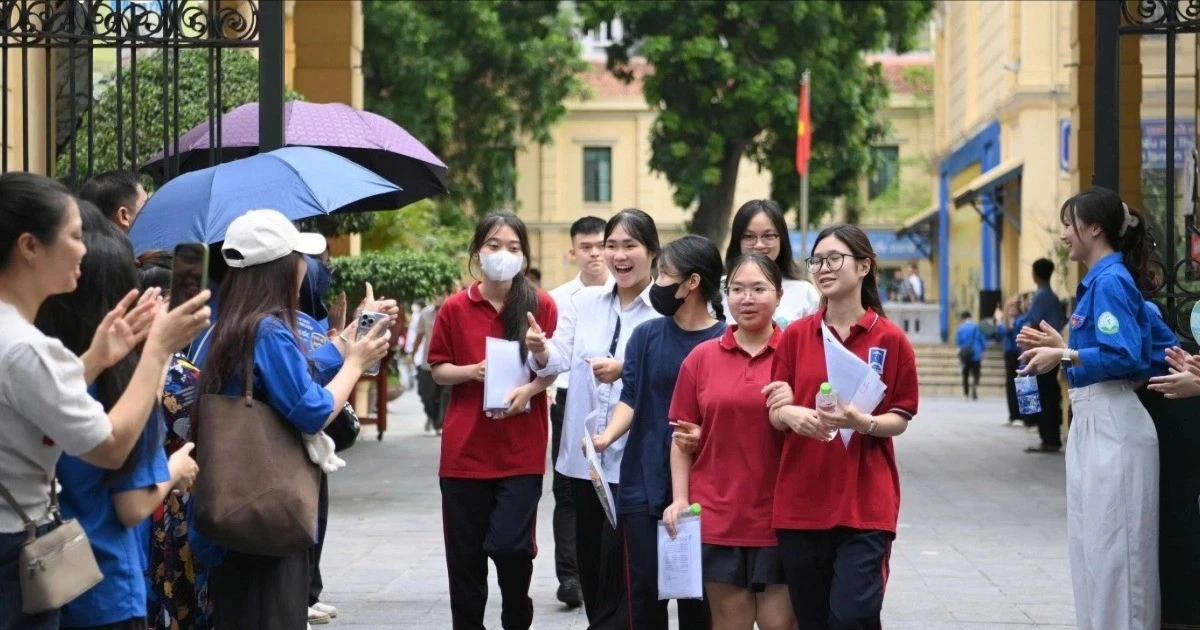Accordingly, the People's Committee of Hue City requires that the restoration of the Nguyen Dynasty throne must comply with museological principles, based on scientific and historical data; using appropriate measures, techniques and technologies to preserve the original elements to the maximum extent.
Restore the original details before the artifact was damaged, do not create additional patterns or motifs, do not renew the artifact, retain the original traces if it does not affect the structure. Use materials compatible with the original material; prioritize reusing techniques and materials that have been used in the creation of the artifact.
The national treasure, the Nguyen Dynasty throne, was displayed at Thai Hoa Palace before it was vandalized.
The restoration of damaged details of the Nguyen Dynasty throne must be carried out in accordance with approved design documents and current regulations on protection, preservation, restoration and repair of national artifacts and treasures. At the same time, restoration must be carried out at facilities with qualified technical conditions, equipment and professional human resources.
All construction stages and materials used must be documented, recorded, filmed, and photographed for comparison, archival purposes, and reporting purposes.
The expected restoration process of the Nguyen Dynasty throne includes 9 steps: preparing the location for restoration of the artifact; moving the treasure; scientific cleaning to clean the artifact and fragments; repositioning the fragments into a block; repositioning the complete artifact; stabilizing the lacquer and gilding layers; restoring the lacquer and gilding layers; protective coating and organizing acceptance.
The left armrest of the throne was broken and smashed into 14 pieces.
After restoration, the Nguyen Dynasty throne will be re-displayed at its original location in Thai Hoa Palace, Hue Imperial City. The preservation plan for the treasure will be implemented according to relevant national standards.
As reported by CAND Newspaper, the Nguyen Dynasty throne was recognized as a national treasure in 2015. The Nguyen Dynasty throne has two main parts: the throne and the throne base; in which, the throne is made of red-lacquered and gilded wood; the throne body has four pillars connecting the base to the back and armrests; the armrests are arched, the two ends of the armrests are embossed with dragon heads in a forward position; the throne base is rectangular, measuring 87x72cm.
At the time of the construction of the national treasure dossier in 2015, most of the gilded surface was peeling. The right throne arm was broken and had been temporarily reinforced with steel wire; the left throne arm was cracked and the gilded layer was peeling. In 2017, the Hue Museum of Royal Antiquities carried out minor repairs to the Nguyen Dynasty throne.
However, on May 24, Ho Van Phuong Tam (born in 1983, from Hue City, residing in Ho Chi Minh City) while visiting the Thai Hoa Palace relic, jumped over the security fence, sat on the throne, then broke the left arm of the throne, smashing it into 14 pieces.
After the incident, the People's Committee of Hue City sent a document to the Ministry of Culture, Sports and Tourism asking for opinions on establishing a Council to evaluate and develop a plan to restore the Nguyen Dynasty throne.
Source: https://cand.com.vn/Chuyen-dong-van-hoa/ngai-vua-trieu-nguyen-sau-khi-bi-pha-hoai-se-duoc-phuc-che-nhu-the-nao--i777714/


































![[Photo] An Phu intersection project connecting Ho Chi Minh City-Long Thanh-Dau Giay expressway behind schedule](https://vstatic.vietnam.vn/vietnam/resource/IMAGE/2025/8/21/1ad80e9dd8944150bb72e6c49ecc7e08)































![[Photo] Politburo works with the Standing Committee of Hanoi Party Committee and Ho Chi Minh City Party Committee](https://vstatic.vietnam.vn/vietnam/resource/IMAGE/2025/8/21/4f3460337a6045e7847d50d38704355d)

































Comment (0)